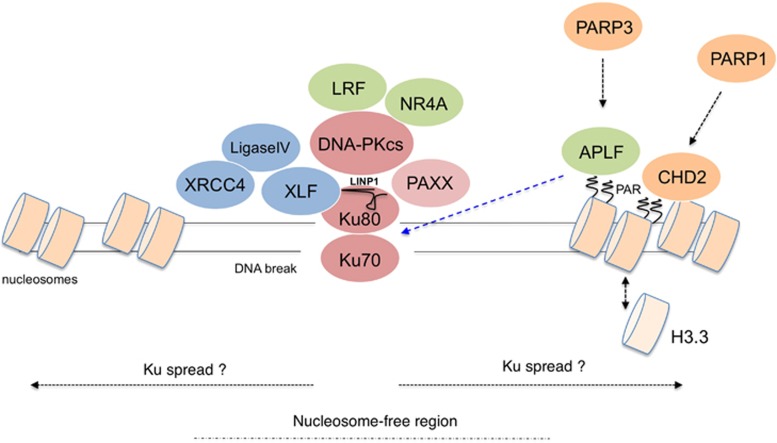Figure 2.
A simplified model for DSB repair mechanism via non-homologous end joining (c-NHEJ) in chromatin with emphasis on the role of poly-ADP-ribosylation (PAR). Double-strand DNA break (DSB) is initially bound by Ku dimer. DNA-bound Ku undergoes an allosteric change to recruit other effectors of the c-NHEJ DSB repair pathway: DNA-PKcs, PAXX, XLF and XRCC4/Ligase IV. Ku can potentially spread away from the DSB. The interaction between Ku and DNA-PKcs is further stabilized by various factors such as LRF and LIMP (ncRNA). This figure includes some of the known chromatin-remodeling steps that occur at DSBs such as generation of limited nucleosome-free region and PAR-dependent variant histone exchange (see Figure 1 for a more extensive description of DSB-related chromatin changes). PAR-dependent H3.3 variant histone exchange is promoted by PARP-1 in conjunction with the CHD2 chromatin remodeller and is required for stable association of Ku with DSBs. Additional accessory c-NHEJ factor is the APLF protein that binds to PARsylated chromatin (in this case PARsylation is catalysed by PARP3) and interacts with Ku to enhance the stability of repair complexes on chromatin. NR4A nuclear orphan receptors bind DNA-PKcs and are able to promote DSB repair.

